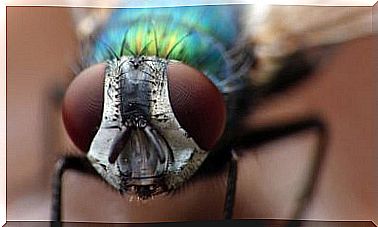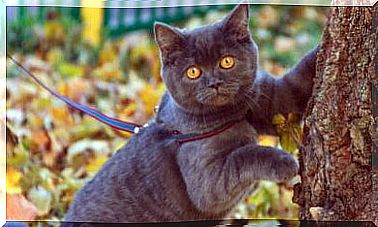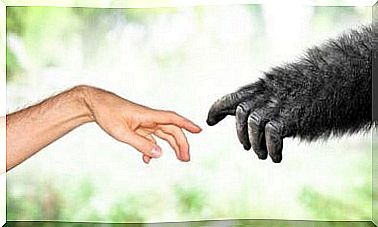The Green Monkey: From Egypt To The Laboratories
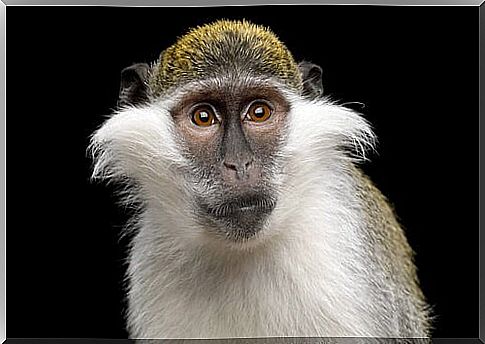
The green vervet is a truly unique primate, little known in the West. However, it has had a great impact on our lives and has had a close relationship with humans for thousands of years.
Read this article and find out how the green vervet can still help us.
The green vervet: characteristics
The green vervet is a representative of the Chlorocebus family, a group of African primates that are part of the vervets.
Among them it is also possible to meet the mandrill and the macaques.
These species have minimal differences between them. The taxonomic classification has adapted to the hybridization of the various species that divide the territories. For this reason we speak indiscriminately of six species.
As for its physical characteristics, it is a medium-sized primate, which does not exceed six kilos in weight. Its coat is of different colors, with green and gold tones. The belly hair is slightly yellowish, while the rest of the body is blue-gray. However, the colors can differ between the various species.
Habitat
In general, the different species of green vervet live throughout Africa. They appear in about forty separate countries, including Ethiopia and Senegal. Distribution goes from the south of the Sahara to the tip of South Africa.
They are primates that have expanded a lot. In fact, they are present in almost all of this huge continent and have become an allochthonous species in Cape Verde and the Caribbean, where they have a habit of stealing cocktails from tourists.
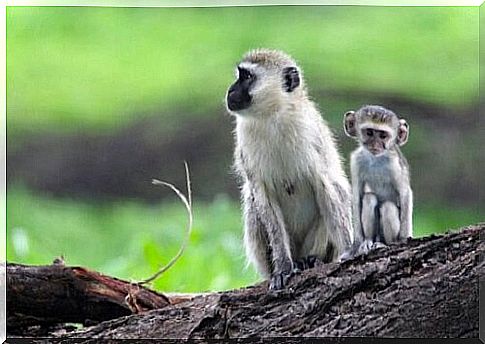
Behavior
Its vast presence throughout the African continent shows how the green monkey is able to adapt to many ecosystems. In fact, one of the reasons for the expansion of the green vervet lies in its varied and wide diet compared to other primates. Typically, it feeds on flowers, mushrooms, berries, small mammals, insects, or leaves.
For this reason, the green vervet has adapted to the most diverse environments, some of which are characterized by a large presence of human beings. In fact, the behavior of the green monkeys of Senegal is very different from that shown by the same species in the Caribbean.
Groups usually consist of 25 individuals. However, there may be fewer or hundreds of them. The communication of the green vervet is really rich and fascinating. In fact, it presents warning signs to warn of imminent predators, whether they are land or flying. For this reason, the learning of this animal has long been studied.
The green vervet and Ancient Egypt
The relationship of the green vervet with our species is very interesting and you may have heard of it. It is a 4,000-year-old story that continues today.
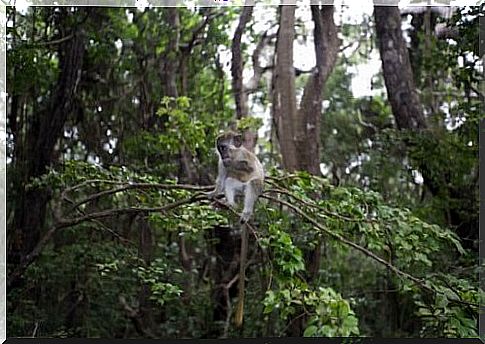
The green monkey was revered in Ancient Egypt. In fact, the inhabitants of this ancient nation were the first to have this primate species as a pet.
However, this practice is now banned in many countries.
For this reason, many green monkeys are found in the Rift Valley and mummified specimens of this species have been found, underlining their importance in Ancient Egypt.
The green vervet and the human being today
The relationship between this monkey and the human being has not yet ended. In fact, this primate has been used for the creation of cell cultures that have made it possible to eradicate diseases such as smallpox and polio.
Clearly, unfortunately for this animal, experiments have been made on it. However, even if this practice is seen as immoral for many people, thanks to the sacrifice of this animal , significant progress has been made in the study of hypertension and AIDS.
This animal is one of the most widespread primates and is not in danger of extinction. In fact, in some areas, the green vervet is seen as a harmful and pest animal that damages crops, markets and tourist areas.

